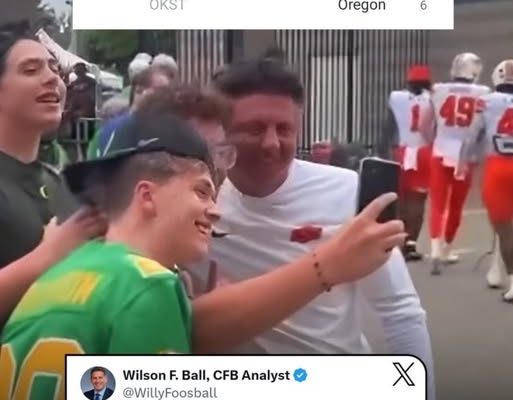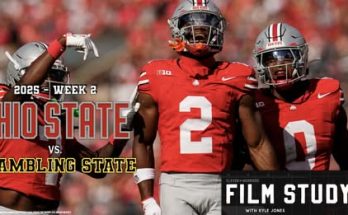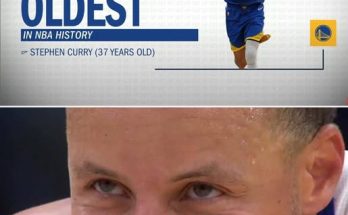The college football landscape has always been a space where narratives shift quickly, where momentum can be gained or lost not just on the field but in the court of public opinion, and where the perception of a program or a coach often lingers longer than the reality of wins and losses. That is why when controversy hits or when missteps are exposed, the damage can be compounded by the reactions of fans, media, and even recruits who are constantly assessing whether a program is moving in the right direction. For Oklahoma State and their longtime head coach Mike Gundy, this moment feels like one of those crossroads where the spotlight is uncomfortably bright and the phrase “this is a terrible look” becomes more than just criticism—it becomes an indictment of leadership, judgment, and accountability.
Mike Gundy has been the face of Oklahoma State football since 2005, and in that time he has created a brand that often portrays him as fiery, unapologetic, and deeply loyal to his players. His “I’m a man, I’m 40” rant years ago became an internet classic and a symbol of his willingness to defend his team, and for a long time it played into the narrative of a coach who cared about his players like family. Yet as years have gone by, the edges of that image have frayed. Questions about his relationships with players, about cultural divides within the locker room, and about how he adapts to the modern era of college football have grown louder. This latest situation only adds to that noise, and the timing could not be worse for Oklahoma State given how competitive and cutthroat the new era of college football has become with NIL deals, the transfer portal, and constant scrutiny.
The phrase “this is a terrible look” carries weight because it suggests something more than a simple mistake. It suggests an optics disaster, an inability to control the narrative, and an impression that will stick in the minds of recruits, boosters, and fans. For Gundy, who has managed to keep his job through ups and downs by maintaining respect among administrators and by delivering just enough on the field, this moment represents a real crack in his carefully managed image. When fans begin to question not just the results but the integrity or the decision-making of their head coach, the foundation of a program can begin to shake.
Oklahoma State is not a program that can afford those kinds of shakes lightly. Unlike blue bloods such as Alabama, Ohio State, or Texas, the Cowboys rely heavily on continuity and stability. Their recruiting pipeline is not as deep, their resources not quite as vast, and their margin for error significantly smaller. That is why Gundy’s missteps matter so much. Every poor headline, every viral clip that paints him or the program in a negative light, every suggestion that Oklahoma State is out of touch or mismanaged can undo months or years of progress. In the high-stakes world of recruiting, optics matter as much as facilities or win-loss records, and right now the optics for Oklahoma State are abysmal.
What makes the situation worse is the sense of missed opportunity. Oklahoma State has had seasons in recent years where they seemed on the cusp of national recognition. They have upset powerhouses, competed for Big 12 championships, and positioned themselves as a team that could contend even in a rapidly evolving college football landscape. Yet at every turn, something has seemed to hold them back—whether it’s injuries, questionable play-calling, or off-field issues. And now, with this controversy surrounding Gundy, the narrative has shifted from Oklahoma State being a tough, resilient underdog to being a program that can’t get out of its own way. That change is devastating because culture and perception fuel college football more than most fans realize.
Players want to join programs where they feel confident they will be developed, respected, and given the chance to win big games. Parents want to send their sons to schools where they know the coaching staff is trustworthy, steady, and capable of helping their children transition into adulthood. Boosters want to attach their money to winners who represent the school well. Right now, Mike Gundy and Oklahoma State look like they are failing on all three fronts. This controversy makes the program look unstable, makes the coach look stubborn or careless, and makes the overall brand of Oklahoma State football weaker.
It is also important to acknowledge the shifting dynamics of college football itself. In the past, a coach like Gundy could weather these storms by relying on his record and his personality. Fans would shrug and say, “that’s just Gundy,” while boosters would stay loyal out of tradition. But in 2025, the game is different. Players have options. The transfer portal means they can leave at the first sign of dysfunction. NIL opportunities mean they can align themselves with programs that have stronger public images and more corporate backing. Media scrutiny is more intense than ever, and every misstep is amplified on social media in real time. In that environment, a coach cannot afford to have a “terrible look” because the consequences are immediate and far-reaching.
Consider the way recruits will view this. A highly sought-after high school player scrolling through his phone sees headlines about Mike Gundy and Oklahoma State being in turmoil, about the optics being terrible, about questions swirling around leadership. Does that player want to step into that environment, even if the facilities are strong or the tradition is respectable? Or does he look to other schools that appear more stable and more forward-thinking? That is the danger facing Oklahoma State right now—the risk that one controversy snowballs into a recruiting drought that sets the program back years.
For fans, the frustration is palpable. Oklahoma State supporters have long prided themselves on loyalty and on being a community that rallies around its team. Yet even the most loyal fans have limits, and when they feel like their program is being embarrassed on a national stage, patience runs thin. Social media has already reflected a divide within the fan base, with some defending Gundy as a victim of overreaction and others demanding accountability and change. That divide is dangerous because it erodes the unified culture that Oklahoma State has relied on for decades.
The administration at Oklahoma State also faces a difficult decision. Do they stand by their veteran coach, hoping this storm passes like so many others have in the past, or do they take bold action to reset the direction of the program? Neither choice is simple. Firing a coach like Gundy would be seismic, both financially and culturally, given his long history with the school. Yet staying the course risks deeper alienation of fans, recruits, and players. That is the bind created when a moment becomes defined as a “terrible look”—there are no easy outs, no quick fixes, just hard choices and lasting consequences.
In truth, the future of Oklahoma State football may hinge on how this moment is handled. If Gundy and the program can show accountability, can rebuild trust, and can pivot to a message of growth and unity, then the damage may be contained. But if the response is defensive, dismissive, or tone-deaf, then the wound will deepen and the narrative will solidify that Oklahoma State is a program in decline. That is the danger of optics in college football—they harden into reputation if not actively countered.
The sad irony is that Oklahoma State has much to offer. The program has tradition, passionate fans, and a history of producing both exciting football and NFL-caliber talent. Yet those positives are overshadowed when leadership stumbles publicly. For Mike Gundy, who has long defined himself as a fighter and a leader who puts his team first, this controversy represents a direct challenge to that identity. To many on the outside, it looks like he has failed in the very areas he has always claimed as his strengths, and that contradiction makes the optics even worse.
Ultimately, college football is about more than wins and losses. It is about culture, perception, and trust. Right now, Oklahoma State has none of those in its favor, and Mike Gundy is at the center of the storm. This is not just a bad week or a bad headline—it is a defining moment that will shape how the program is viewed for years to come. And unless something changes quickly, the lasting impression will be simple and damning: this is a terrible look for Mike Gundy and Oklahoma State.



